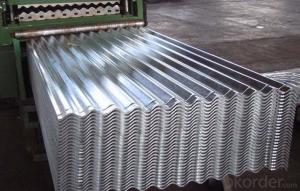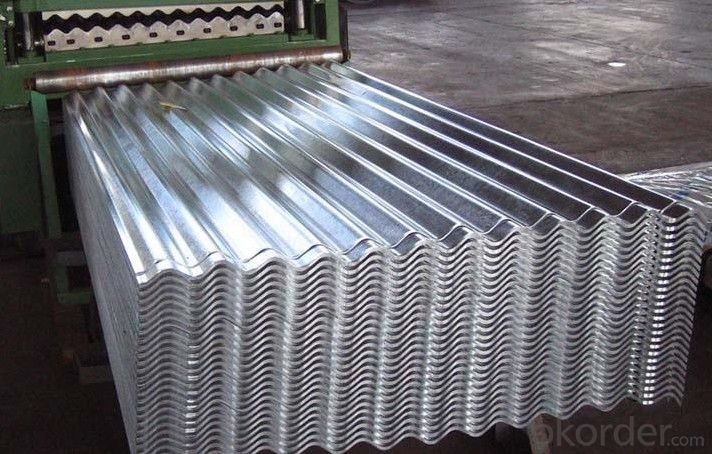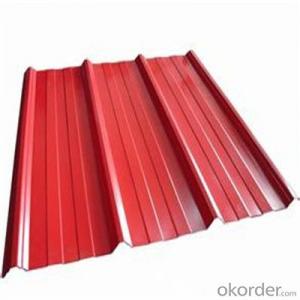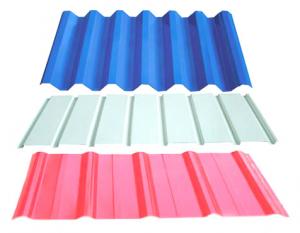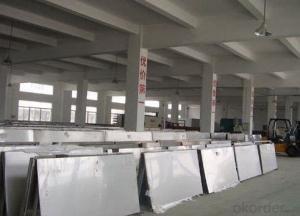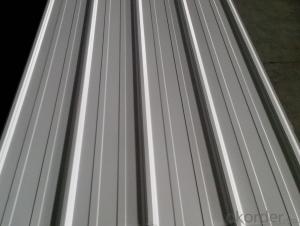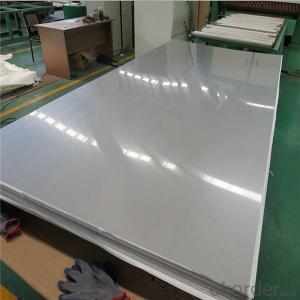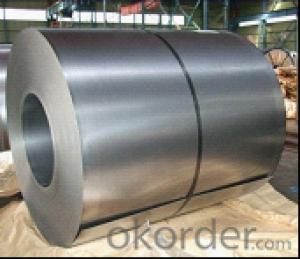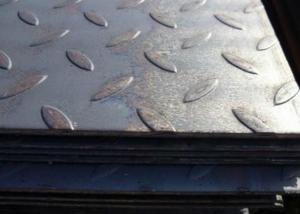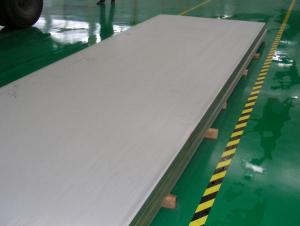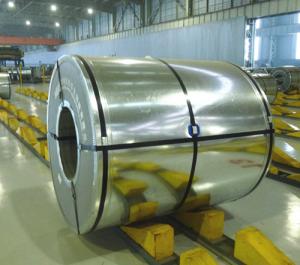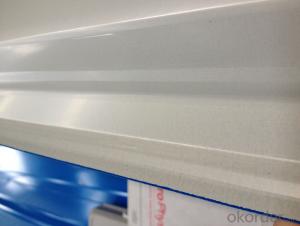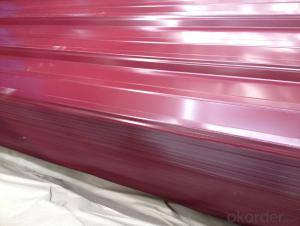Prime quantity color coated Galvanized Steel corrugated sheets
- Loading Port:
- China main port
- Payment Terms:
- TT OR LC
- Min Order Qty:
- 1 m.t.
- Supply Capability:
- 100000 m.t./month
OKorder Service Pledge
OKorder Financial Service
You Might Also Like
1) AVAILABLE DESIGNATION OF (Prepainted galvanized steel coils) printed PPGI coils
Quality Q/BQB 440-2003 JIS G3312-1994 EN 10326-2004 ASTM A653-02a
EN 10327-2004 (BASE PLATE)
(BASE PLATE)
Commercial Steel TDC51D CGCC DX51D+Z/AZ CS Type A/B/C
Forming Steel (TSt01,TSt02,TSt03) CGCD1 FS Type A, Type B
Drawing TDC52D /TDC53D - DX52D+Z/AZ DDS TYPE A/C
Steel DX53D+Z/AZ
Structural TS280GD(TStE28) CGC400 S280D+Z/AZ SS275
Steel TS350GD(TStE34) CGC440 S350D+Z/AZ SS340 Class1
2) OUR SPECIFICATION OF (Prepainted galvanized steel coils) printed PPGI coils
Available Size:
Manufacturer Thickness Width Length of plate Inner diameter of coil
JIANGSU HUIYE STEEL SHEET CO.,LTD 0.2-1.2mm 800/914/1000/1200/1219/1250mm 1000-6000mm 508mm/610mm
Coated Mass OF (Prepainted galvanized steel coils) printed PPGI coils:
Base plate Available Coated Mass(g/m^2)
Galvanized Steel 80, 100, 120, 160, 180
Galvalume Steel 50, 70, 150
Available Painting OF (Prepainted galvanized steel coils) printed PPGI coils:
Category of Painting Item Code
Polyester PE
High-durability polyester HDP
Silicon modified polyesters SMP
Polyvinylidene fluoride PVDF
Easy-Cleaning —
Painting Thickness Top side: 20+5microns;
Bottom side: 5~7microns.
Color System Produce according to RAL Color System or as per buyer’s color sample.
Painting structure Top surface Bottom surface
Primer coating No coating 1/0
Primer coating Primer coating 1/1
Primer coating + Finish coating No coating 2/0
Primer coating + Finish coating Primer coating or single back coating 2/1
Primer coating + Finish coating Primer coating + Finish back coating 2/2
- Q: Can the steel sheets be bent or formed into different shapes?
- Yes, steel sheets can be bent or formed into different shapes using a variety of techniques such as pressing, rolling, or using specialized machinery like hydraulic brakes or metal forming tools.
- Q: Are steel sheets suitable for fire-resistant applications?
- Yes, steel sheets are suitable for fire-resistant applications. Steel is known for its excellent fire resistance properties. It has a high melting point and does not easily ignite or contribute to the spread of fire. Steel sheets can be used in various fire-resistant applications such as fire doors, fire-rated walls, and fireproof enclosures. Additionally, steel sheets can be combined with other fire-resistant materials, such as fire-resistant coatings or insulation, to further enhance their fire resistance. Overall, steel sheets are a reliable choice for fire-resistant applications due to their durability, strength, and ability to withstand high temperatures.
- Q: Are steel sheets suitable for high-pressure applications?
- Yes, steel sheets are suitable for high-pressure applications due to their excellent strength and durability. Steel has a high tensile strength and can withstand high-pressure conditions without deformation or failure, making it an ideal choice for various industries such as oil and gas, automotive, and construction.
- Q: What is the average thickness of steel sheets?
- The thickness of steel sheets can differ based on multiple factors such as the specific steel type, intended use, and industry norms. Generally, steel sheets can have a thickness ranging from approximately 0.4 millimeters (0.016 inches) to several millimeters (0.1 inches or more). It is crucial to acknowledge that different industries and applications may have specific criteria for steel sheet thickness. Hence, it is advisable to refer to relevant standards or specifications for precise details.
- Q: What are the different sheet metal piercing techniques for steel sheets?
- There are several sheet metal piercing techniques used for steel sheets, including drilling, punching, and laser cutting. Drilling involves using a drill bit to create holes in the sheet metal. Punching uses a punch and die set to force a hole through the material. Laser cutting employs a high-powered laser beam to melt or vaporize the metal, creating precise and clean cuts. These techniques offer different advantages depending on the specific requirements of the project.
- Q: Can steel sheets be used for elevator cabins?
- Yes, steel sheets can be used for elevator cabins. Steel is a common material choice for elevator cabins due to its strength, durability, and fire resistance properties. Steel sheets can be fabricated to create a sleek and modern look for elevator cabins, and they can also be easily customized to fit specific design requirements. Additionally, steel is a cost-effective option for elevator cabins as it is readily available and has a long lifespan.
- Q: Can steel sheets be used for outdoor sculptures or artwork?
- Yes, steel sheets can be used for outdoor sculptures or artwork. Steel is a durable material that can withstand outdoor conditions and can be shaped and welded into various artistic forms. Its strength and resistance to corrosion make it suitable for outdoor installations, allowing for the creation of long-lasting and visually appealing sculptures and artwork.
- Q: How do steel sheets perform in marine environments?
- Steel sheets are well-suited for marine environments because they possess high strength and corrosion resistance properties. The presence of saltwater and high levels of moisture in these environments can cause significant damage to many materials; however, steel sheets are specifically designed to endure such conditions. Corrosion resistance is a key factor contributing to the performance of steel sheets in marine environments. Typically, steel sheets are coated with zinc or other protective coatings like epoxy or galvanized coatings, which act as a barrier against corrosion. These coatings prevent direct contact between the steel and saltwater, reducing the risk of rust and deterioration. Moreover, the high strength of steel sheets makes them highly durable in marine environments. They can withstand harsh conditions such as waves, strong winds, and impact from debris. This strength ensures that steel sheets maintain their structural integrity and offer long-term performance. Furthermore, steel sheets are known for their fire resistance, which is crucial in marine environments where safety is a top concern. Steel has a high melting point and does not contribute to the spread of fire, making it a reliable choice for marine applications. Nevertheless, it is important to note that even with their excellent performance, steel sheets may still require regular maintenance and inspection in marine environments. This includes monitoring for signs of corrosion, repairing or replacing damaged coatings, and addressing any potential issues promptly to ensure continued performance. In conclusion, steel sheets are a reliable option for marine environments due to their corrosion resistance, high strength, and fire resistance. They can withstand the challenging conditions of saltwater, moisture, and impact, making them an ideal material for various marine applications.
- Q: How do steel sheets perform in extreme temperatures?
- Steel sheets generally perform well in extreme temperatures. Steel is known for its excellent heat resistance, allowing it to maintain its structural integrity and mechanical properties even when subjected to high or low temperatures. However, extreme temperatures can affect the strength and ductility of steel, causing it to become brittle at low temperatures and lose some of its load-bearing capacity at high temperatures. Therefore, the specific performance of steel sheets in extreme temperatures depends on factors such as the grade of steel used and the duration and intensity of the temperature exposure.
- Q: Can steel sheets be used for electrical conductors or grounding?
- No, steel sheets cannot be used for electrical conductors or grounding as steel is not a good conductor of electricity.
Send your message to us
Prime quantity color coated Galvanized Steel corrugated sheets
- Loading Port:
- China main port
- Payment Terms:
- TT OR LC
- Min Order Qty:
- 1 m.t.
- Supply Capability:
- 100000 m.t./month
OKorder Service Pledge
OKorder Financial Service
Similar products
Hot products
Hot Searches
Related keywords
